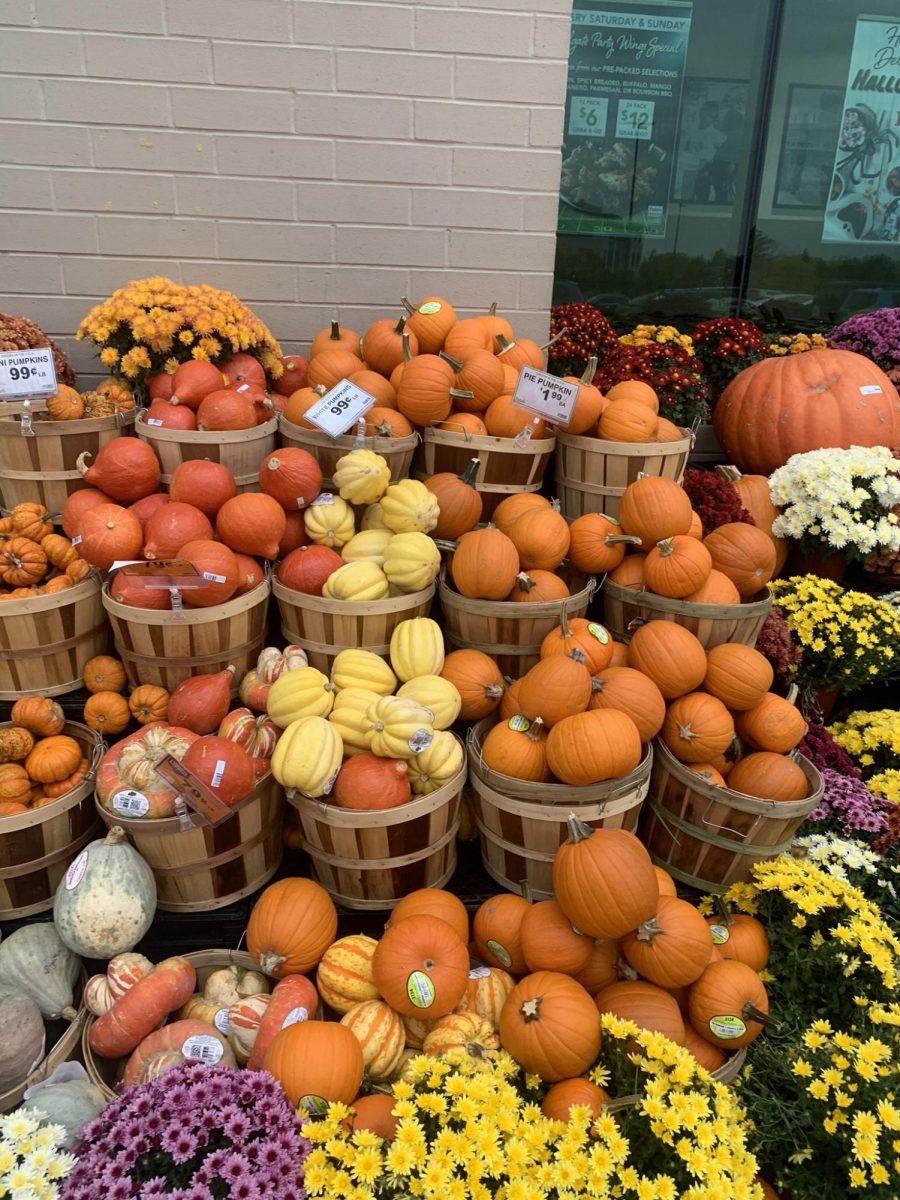Pumpkins are a symbol of fall and part of many festive fall activities. Each year, there are thousands of pumpkins being grown in the United States to be sold to consumers who do not necessarily use the entire pumpkin or know how to properly dispose of the remaining pumpkin waste. Despite the increase of pumpkins being grown each year, we can eliminate the effects that the high amounts of pumpkin production have on our environment.
According to the Agricultural Marketing Resource Center, the United States is responsible for producing approximately 1.5 billion pounds of pumpkins each year, and Illinois is highly responsible for the majority of pumpkin production. According to data reports from the U.S. Department of Agriculture, “Illinois led the nation with 652 million pounds of pumpkins last year, followed by Indiana with 181 million, and California with 157 million.”
This is a major issue for our earth because “75% of the pumpkins went to landfills while only 25% of it was consumed.” This ratio of pumpkins being consumed and sent into landfills is bad for our environment. Animals, the homeless, and the poor could be fed with the remaining 75% that is sent into our landfills. Instead of the government trying to decrease pumpkin production, it increases at staggering rates.
Animals such as dogs, cats, or even animals in your backyard could be fed pumpkins. The pumpkins that are not sold at grocery stores or farms could be donated to feed the homeless and the poor. This would reduce waste going to landfills and feed people who need food instead of throwing away the money that was used to produce each pumpkin. By using those pumpkins that are not sold, food organizations can create healthy and festive food dishes to feed the people.
Also, the land dedicated to growing pumpkins could be used for something else. According to the U.S. Department of Agriculture, “Nearly 18,000 acres of pumpkins were planted in Illinois last year. Compare that to sweet corn, which accounted for 6,500 acres.” Pumpkins not only take up valuable land that could be used for more beneficial things, but pumpkins take up high amounts of water. One pumpkin needs up to 500 gallons a week depending on its size. With contest-winning pumpkins take up twice the amount if not more to grow such a massive pumpkin which will also end up in the landfill.
Although pumpkin contests, pumpkin carving, and pumpkin smashing can be fun, these things are doing more harm than good when it comes to how the pumpkin waste is disposed of. Doing small things such as finding ways to properly dispose of the pumpkin’s waste can greatly benefit our planet. To reduce the amount of pumpkin waste, you can compost the remaining waste, incorporate it into food dishes, or depending on the dietary restrictions of your pet you can always feed it to your pets by making them pumpkin treats or incorporating it into their food. You can also research if your local zoo accepts pumpkin donations. If they do not accept pumpkin donations you can always donate to your local farm so it can be used as compost for crops or to feed their farm animals.
Here are a few pumpkin recipes that you can make with your fresh pumpkin.
Pumpkin bread https://www.onceuponachef.com/recipes/spiced-pumpkin-bread.html
Pumpkin pie https://www.joshuaweissman.com/post/pumpkin-pie
Pumpkin soup https://www.allrecipes.com/recipe/9191/pumpkin-soup/
Candied pumpkin https://www.mexicoinmykitchen.com/calabaza-en-tacha-candied-pumpki
Roasted pumpkin seeds https://www.jessicagavin.com/how-to-roast-pumpkin-seeds/


